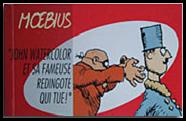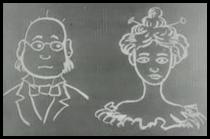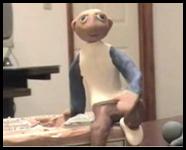Pre-computer animation techniques
Animation has been around for a long time. It is only the tools and techniques which have changed. Previous to computers, there were many ways to create animations! Here are just a few.
 Flip Books
Flip Books
A flip book is a collection of combined pictures intended to be flipped over to give the illusion of movement and create an animated sequence from a simple small book.
http://www.flipbook.info/index_en.php - This French website details some of the many attempts at animation using the method called “Flip Books”. It shows some flip book animations as well as some to the contraptions used to display these precursors to film.
 Stop Motion Photography
Stop Motion Photography
http://www.americaslibrary.gov/ - American animation owes its beginnings to J. Stuart Blackton, a British filmmaker who created the first animated film in America. In 1895, he met Thomas Edison. Can you guess what this meeting with the famous inventor inspired him to do?
The Enchanted Drawing/Humorous Phases of Funny Faces
 Claymation
Claymation
Claymation is a stop motion animation technique using modeling clay or plasticine for most of the “moving” characters. This technique has been used for even big budget animation films such as Nightmare Before Christmas and Chicken Run.
http://www.youtube.com/watch?v=0ejiw5e-fOs – This is a good example of claymation, not for its sophistication, but for its “behind-the-scenes” look at how a claymation character is brought to life.
Terms:
ANIMATION - Technique by which inanimate objects seem to come alive by flashing a series of minutely changed images, called “cells,” at a rate which the brain interprets as movement. See also, Cell and Persistence of Vision.
CELL - One frame of animation, usually a single cartoon or picture.
PERSISTANCE OF VISION - A visual phenomenon where an image is retained in the eye for a short period of time, creating an illusion of continuous motion in film and video.
STOP MOTION - an animation technique which makes static objects appear to be moving. It is central to the claymation technique used on popular children's shows such as Gumby and to the puppet-based animation of such well-known films as The Nightmare Before Christmas (Tim Burton, 1993) and Chicken Run (DreamWorks/Aardman Animations, 2000).
wikipedia.org
Things to think about:
- What fundamental ideas do these animation techniques have in common?
- Do we still see examples of these techniques in today’s media environment? Where?
- Why use animation instead of real people and environments?
- Look beyond technique…it is the idea that matters most. Animation is a tool.
Additional Links:
Flip books
A web-based
company which still produces flip books, mainly for business use:
http://www.flippies.com/gallery.htm
A PC program that
takes movie files (.avi format) and prints out pages for a flip book:
http://www.donationcoder.com/Software/Mouser/FlipbookPrinter/
Stop Motion Animation
A brief overview
of how J. Stuart Blackton began
making animations for
http://www.americaslibrary.gov/cgi-bin/page.cgi/sh/animation/blcktn_1
A forum with
examples and plenty of links covering all aspects of stop motion animation:
http://www.stopmotionanimation.com/dc/dcboard.php
Claymation
This site has a
lot of info about creating claymation animations:
http://www.animateclay.com/index.php
A cool site
describing the making of a claymation film by students: